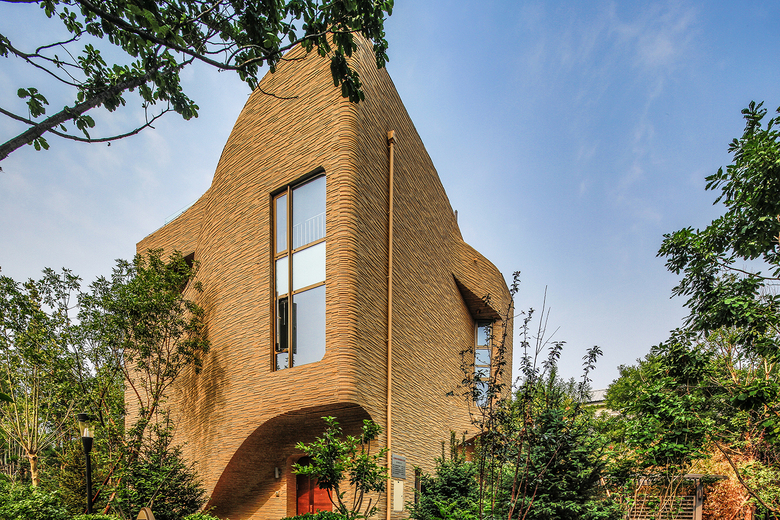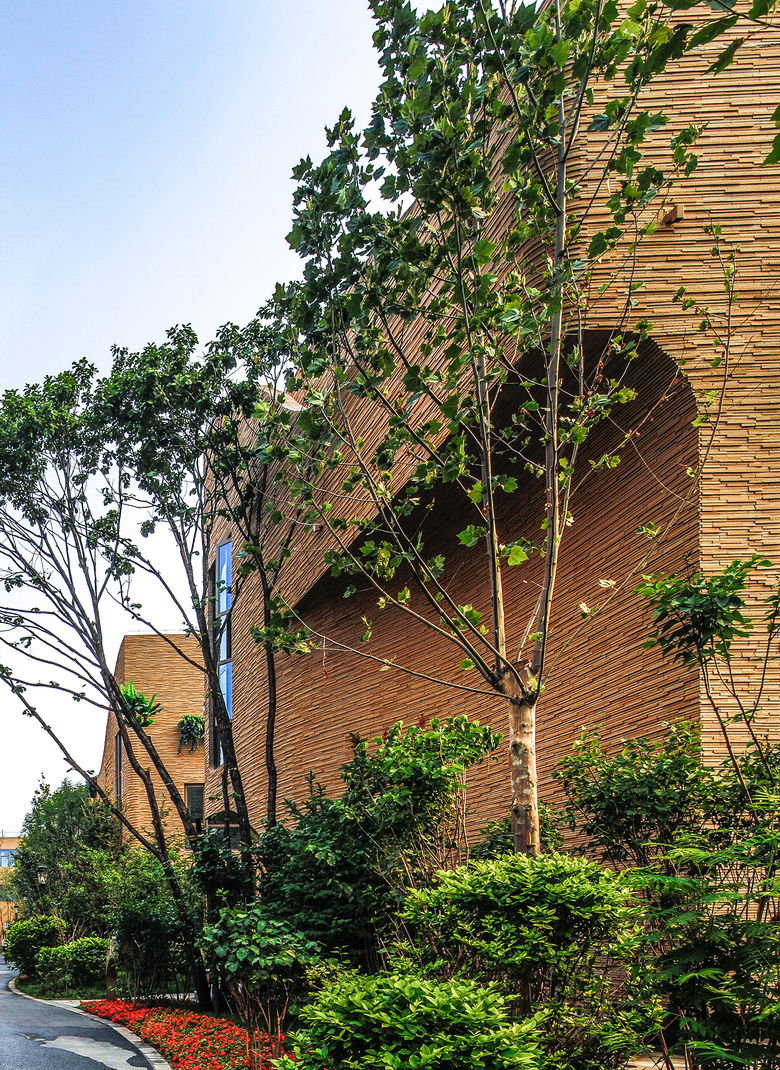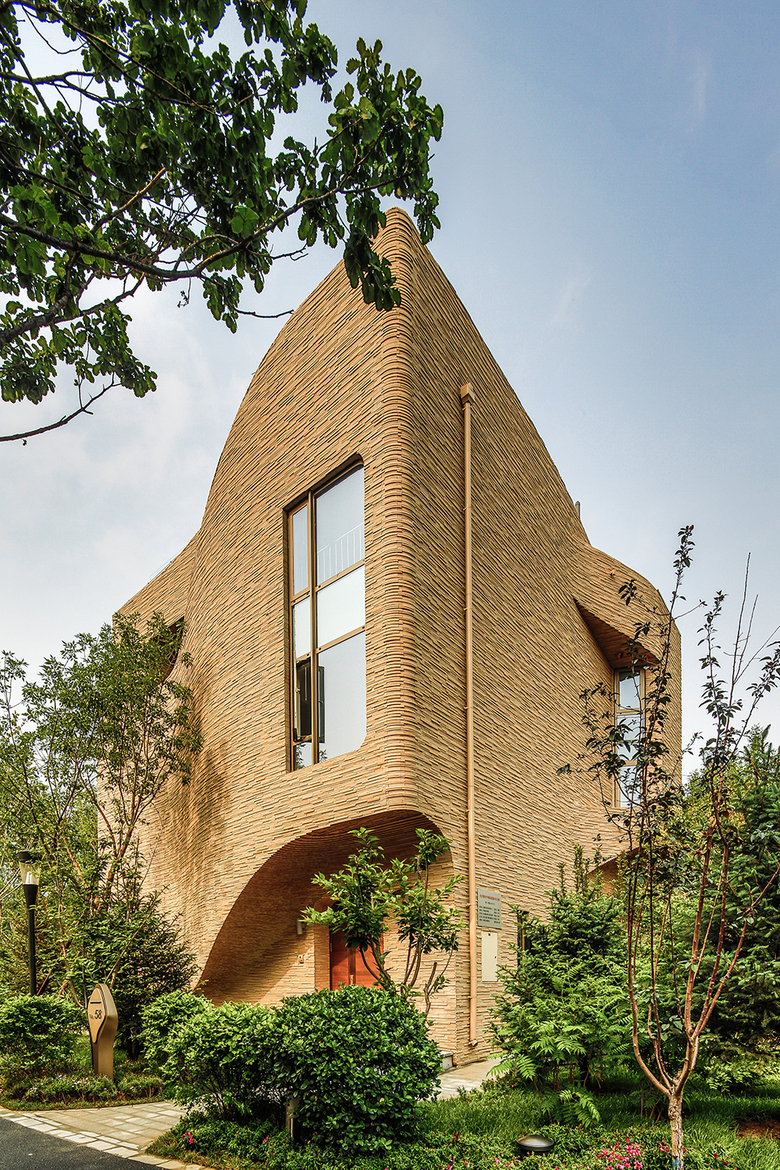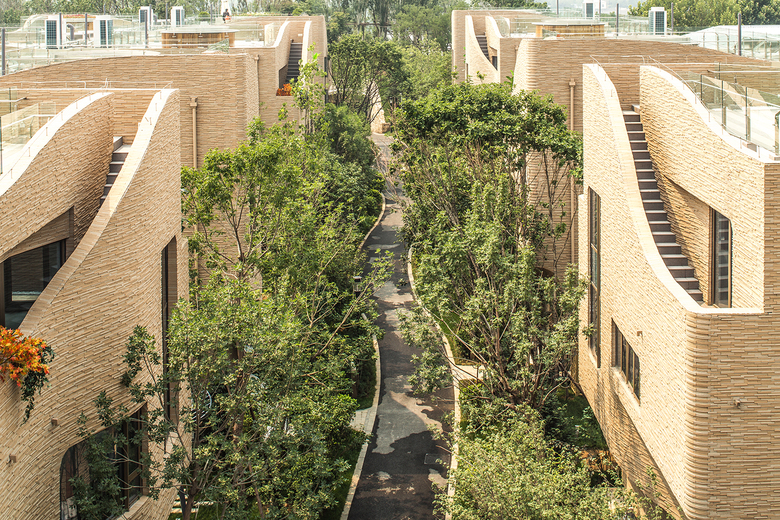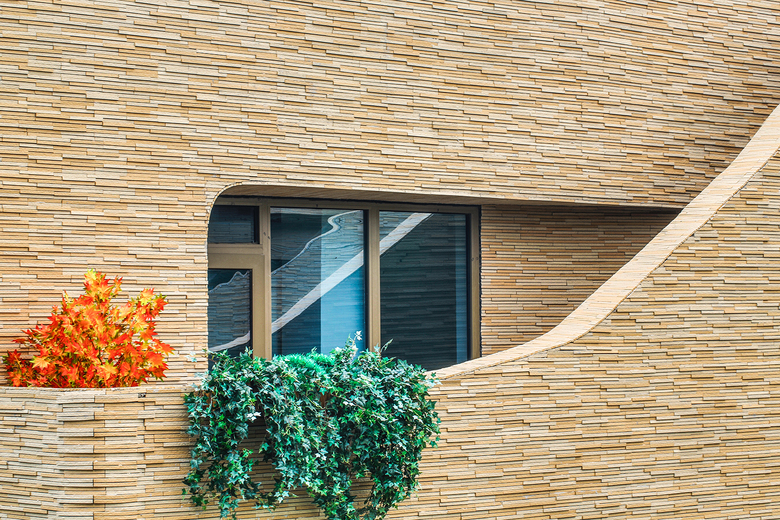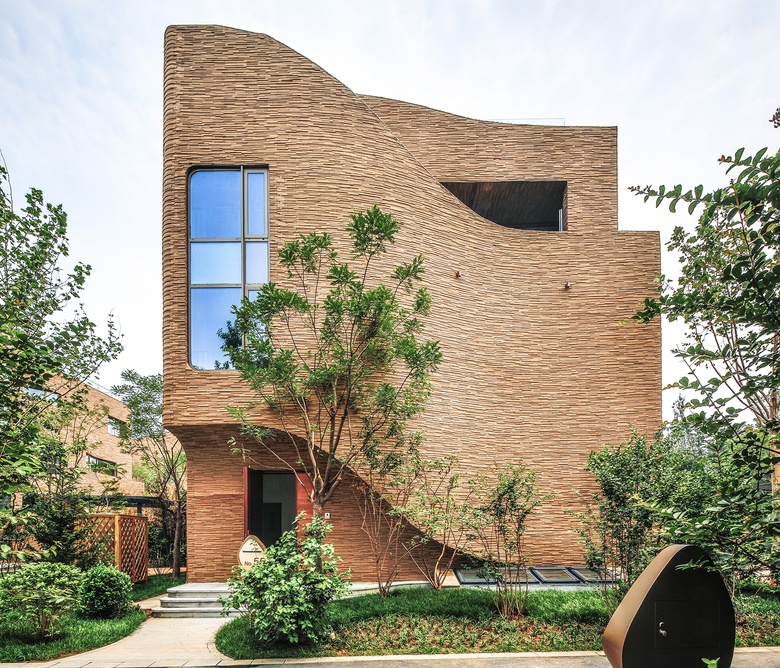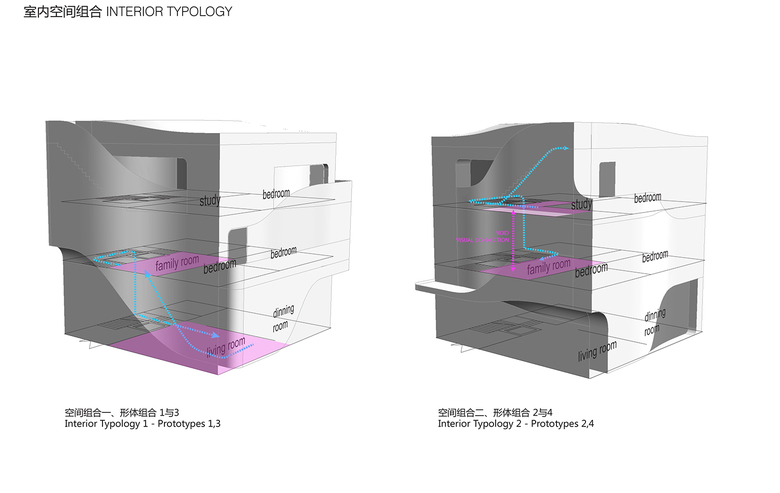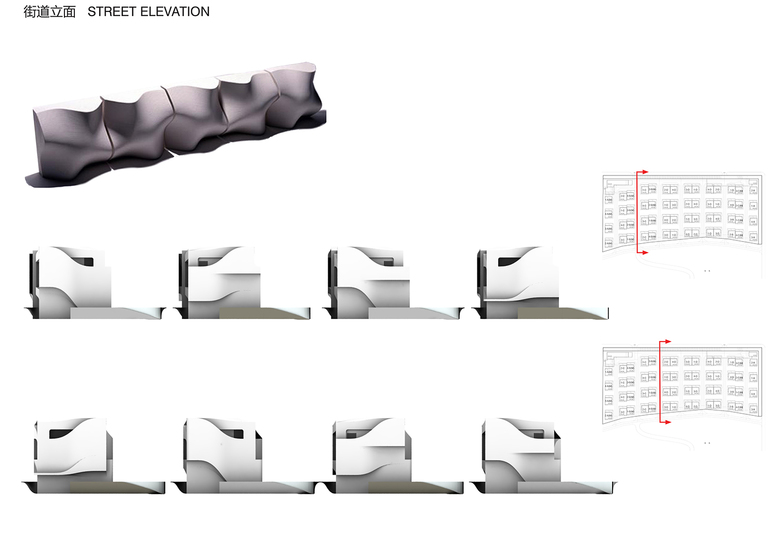Fairyland Guorui
Beijing, 中国
The Fairyland Guorui Villa complex is located in the Miyun Economic & Technical Development Zone 1 in Beijing. The site is situated on a plot where two rivers converge, surrounded by natural scenery and mountain views. In order to take full advantage of the location, the layout of the villas follows an open plan organisation.
The public spaces within and adjacent to the complex follow the design philosophy set out in the masterplan and respond to the context of the site in the waterside location. This includes a riverside boulevard and a tree-lined boulevard as well as a grand central garden. The garden landscaping of the whole development corresponds to the surrounding natural environment. To support this pedestrian-friendly outdoor quality for the residents, the vehicular traffic has been kept to a minimum and cars are confined to a central parking location.
Essential to the design approach for the villa development is the combination of individuality with a distinct quality of community. As a result, a mix of consistency and singular identity defines the scheme.
Like sculptures, the individual villas line the mix of orderly pathways and free form structures oriented towards different views of the surrounding natural landscape.
Facade design – The architectural masterplan envisions sculptural villas scattered along the riverside, each with its own characteristics and living spaces and embedded in the communal space to stimulate a neighborhood effect. The facades of the villas are designed to create a strong inside/outside condition and in order to achieve this employ different ‘sets’ of integrated features, including balconies, bay windows, canopies or terraces and roof-top gardens. Various arrangements of these features are applied to create different types of villas across the compound, enabling variety and preserving the sense of uniqueness through the organisation of geometric elements. Through the creation of these base elements, numerous variations are made possible, while keeping an overall balance and consistency throughout the development and enhancing the efficiency in the actual production and construction of the facade.
Within the organisation of the villas, modern and classical living are combined with respect to family life. The villas offer a variety of rooms for family members of all ages: some communal for shared family activities, some for entertainment and family dining and others for privacy. The incorporation of the outside spaces into the facade design adds further variety to the living spaces, with the directional windows, recessed balconies and the activation of the roof as a living space creating a balance between privacy for the owners and the most possible daylight, wide views and open spaces.
The addition of these facade features further connects the experience of the architecture to the surrounding landscapes. Through slight transformations in shape - created by the slight twisting of the curved surfaces of the façade - rhythm in the elevations is created which adds continuity and further unifies the architecture with the landscape. In addition the clay color of the facade fosters this intrinsic connection between built and natural environment. The facade cladding is made from recycled stone produced from powdered stone and is applied to the facade in a contemporary fashion. This enables the realisation of the fluent curves, while permitting the necessary tolerances for the local construction team.
Sustainability – Numerous energy saving devices and solutions are used in the villas. Passive design techniques are employed which take into account the orientation of the individual buildings and the location and size of the glazed portions of the facade with respect to heat gain. Further energy saving installations include the use of advanced heat insulation in the walls and windows, an adjustable floor heating system, solar energy, a state of the art ventilation system that removes nearly all of the unwanted and unhealthy particles and provides clean and healthy air, a wind power system for lighting supply and sustainable construction materials.
